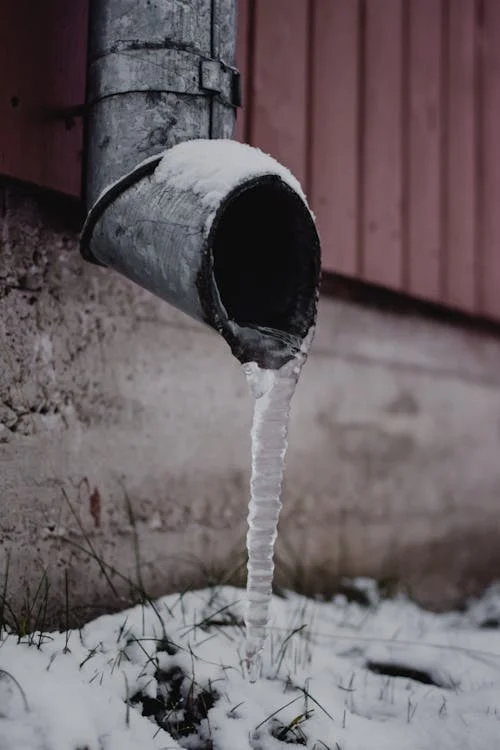Stopping Burst Pipes: Vital Tips to Protect Your Plumbing
Stopping ruptured pipelines is an important worry for homeowners, specifically during chillier months when the risk of cold is increased. Carrying out tactical measures such as proper insulation, regular examinations, and preserving regular interior temperatures can considerably reduce the chance of pipe failure.
Understand Pipeline Vulnerabilities
Comprehending pipe susceptabilities is important for efficient pipes maintenance and preventing costly damages. A number of variables add to the sensitivity of pipelines to bursts, consisting of material structure, age, and environmental problems. Older pipes, especially those made from galvanized steel or polybutylene, frequently weaken gradually, bring about boosted risk of leaks and tears.
Temperature level variations can additionally substantially impact pipeline honesty. In chillier climates, water caught in pipelines can freeze, putting in and increasing stress on the pipe wall surfaces, which might inevitably bring about a burst. In addition, high water pressure can strain pipelines, particularly at bends and joints, enhancing the possibility of failure.

Insulate Pipes Properly
Correct insulation of pipes is essential for stopping freezing and succeeding bursts during winter (burst pipe). Shielding your pipes system successfully safeguards versus temperature level goes down that can bring about pricey damages. Begin by determining susceptible locations where pipelines are revealed to exterior temperature levels, such as cellars, attic rooms, and outside wall surfaces
Usage foam pipeline insulation sleeves or wrap insulation tape around these locations to give a safety barrier. Make certain that all sections of the pipelines, especially those with restricted heat direct exposure, obtain adequate insulation. Pay unique interest to installations and joints, as these are more at risk to cold.
When insulating, it's necessary to pick products that fulfill local building regulations and are proper for the particular environment. For instance, fiberglass insulation is usually suggested for its thermal resistance residential or commercial properties - burst pipe. Furthermore, consider utilizing warmth cable televisions or tape in severe problems, which can be plugged in to provide supplemental warm
Routinely evaluate protected pipelines for any kind of indications of wear or damages, as jeopardized insulation can reduce its efficiency. By taking these proactive procedures, you significantly reduce the threat of pipeline bursts, making sure a dependable plumbing system throughout the winter season.
Maintain Consistent Temperature Level
A steady indoor temperature is crucial for preventing ruptured pipelines during the frigid months. When temperatures drop, water within pipelines can freeze, developing and increasing pressure that may inevitably cause the pipelines to burst.Utilizing a programmable thermostat can aid manage interior temperature levels efficiently, ensuring that areas with pipes stay warm also when the house is unoccupied.
In addition, it is sensible to allow taps to drip a little throughout extreme cool spells. This small circulation of water can stop freezing by alleviating stress within the pipes. Throughout specifically extreme weather occasions, think about temporarily suspending any nighttime problems on your thermostat to maintain a steady warm setting. By carrying out these methods, property owners can significantly decrease the threat of pipeline ruptureds and secure their pipes systems versus the severe wintertime elements.
Routinely Examine Pipes
Routine evaluations of pipes systems are critical for preventing burst pipelines and maintaining overall home stability. Throughout these evaluations, it is important to analyze visible pipelines for signs of corrosion, leaks, or wear.
In addition, examining joints and connections is crucial, as these factors are commonly at risk to leakages. Homeowners must also analyze water pressure degrees, as too much stress can stress the pipes system and boost the risk of pipe bursts.
Take into consideration scheduling expert plumbing inspections at least once a year, particularly prior to winter season, to ensure your system is prepared for colder temperatures. By being proactive in your approach, you can protect your home versus the costly and turbulent effects of ruptured pipelines.
Know Emergency Procedures
Comprehending emergency situation treatments is important for each house owner, specifically after carrying out routine plumbing examinations. Being prepared for a pipes emergency situation can substantially alleviate damage and conserve prices. First, locate your main water shut-off shutoff; it is generally located near the water meter or where the major line enters your home. Acquaint yourself with its procedure, as shutting off the water supply swiftly can avoid comprehensive flooding.
Next, maintain necessary tools helpful. A plumbing emergency situation kit should consist of a wrench, bettor, and towels, as well as a flashlight and a container for tiny leaks. Additionally, consider having the get in touch with details for a trusted plumbing readily available, should the circumstance intensify beyond your control.
If you detect a leakage or ruptured pipe, promptly shut off the supply of water and inform your plumbing. Document the damages with pictures for insurance objectives. Understand the indicators of potential plumbing concerns, such as unusual water pressure variations or damp spots on wall surfaces
Inevitably, positive expertise and speedy action are important in managing pipes emergency situations, ensuring your home continues to published here be secured and Click This Link decreasing prospective damage.

Final Thought
In conclusion, preventing ruptured pipelines demands a multifaceted approach that includes understanding pipeline susceptabilities, proper insulation, keeping consistent indoor temperatures, normal examinations, and understanding of emergency procedures. By carrying out these essential approaches, the danger of pipes failings can be considerably minimized, therefore making certain the long life and efficiency of the plumbing system. Positive steps not only safeguard against possible damages but additionally add to overall water preservation and the defense of home.
In colder environments, water caught in pipelines can ice up, broadening and putting in pressure on the pipeline walls, which may inevitably lead to a burst. When temperature levels drop, water within pipes can ice up, developing and broadening stress that might eventually trigger the pipes to burst. By executing these strategies, home owners can substantially minimize the threat of pipe bursts and guard their plumbing systems versus the harsh winter season aspects.
